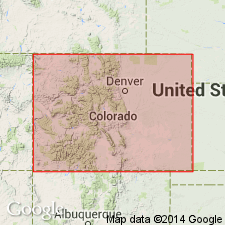
- Usage in publication:
-
- "D" sand
- Modifications:
-
- First used
- Dominant lithology:
-
- Sand
- AAPG geologic province:
-
- Denver basin
Summary:
Is first used as one of two main producing sands in the Denver basin in northeastern CO, southeastern WY, and western NE. Chart (Plate 3) illustrates various nomenclatures for the basin. Chart was part of a paper titled "The Denver-Cheyenne Basin," presented by C. W. Sternberg and A. J. Crowley at Los Angeles A.A.P.G. meeting March 1952. "... nomenclature for the lower Cretaceous sands ... simply classified alphabetically. ... The two main producing sands in the basin are accordingly called the 'D' (upper) and the 'J' (middle). The basal sand members of the Cretaceous we shall call the 'M' and 'O' sands. This A to Z classification truly covers all conditions, because if a certain sand does not seem to correlate with any other bed, there is always an intervening and unused letter to classify it." The "D" sand is shown correlative with the upper part of the Gurley [member] of the Omadi [formation] at top of Dakota group; upper part of the so-called Graneros sands; the 1st Dakota sand at the top of Dakota group; and the upper Muddy. The "D" is overlain by Graneros shale and underlain by unnamed [shale] unit.
Source: GNU records (USGS DDS-6; Denver GNULEX).
For more information, please contact Nancy Stamm, Geologic Names Committee Secretary.
Asterisk (*) indicates published by U.S. Geological Survey authors.
"No current usage" (†) implies that a name has been abandoned or has fallen into disuse. Former usage and, if known, replacement name given in parentheses ( ).
Slash (/) indicates name conflicts with nomenclatural guidelines (CSN, 1933; ACSN, 1961, 1970; NACSN, 1983, 2005, 2021). May be explained within brackets ([ ]).

